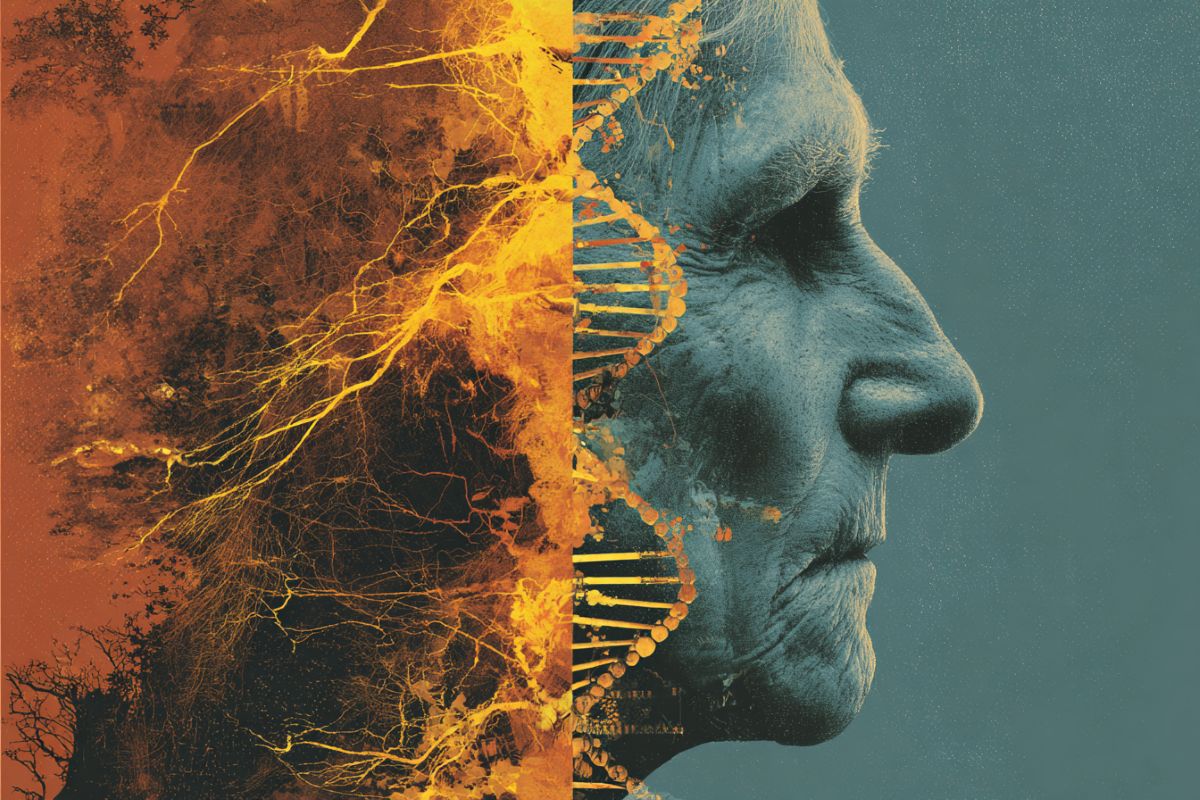Summary: A massive genetic study has identified more than 400 genes that drive different forms of unhealthy aging, from cognitive decline to metabolic problems. The findings show that frailty is not a single condition but multiple subtypes with distinct biological pathways.
This explains why some people age with resilience while others face disease and decline earlier. Researchers say the results could guide personalized treatments and move us closer to therapies that address aging at its roots.
Key Facts
- Gene Discovery: 408 genes linked to frailty were identified, up from just 37 previously known.
- Frailty Subtypes: Categories include poor cognition, metabolic problems, disability, and social isolation.
- Therapeutic Potential: Insights support targeted treatments for different forms of aging, rather than a one-size-fits-all pill.
Source: University of Colorado
It’s a fact of life: Some people age better than others.
Some ease into their 90s with mind and body intact, while others battle diabetes, Alzheimer’s or mobility issues decades earlier. Some can withstand a bad fall or bout of the flu with ease, while others never leave the hospital again.
New University of Colorado Boulder-led research, published this month in the journal Nature Genetics, sheds light on why that is.
In it, an international team of co-authors identify more than 400 genes associated with accelerated aging across seven different sub-types. The study reveals that different groups of genes underlie different kinds of disordered aging, a.k.a. frailty, ranging from cognitive decline to mobility issues to social isolation.
The findings lend support to what is known as the “geroscience hypothesis” — the idea that to treat the multiple chronic illnesses that come with aging, we must treat aging itself.
“To be able to identify treatments to stop or reverse accelerated biological aging, you need to know what the underlying biology is,” said Isabelle Foote, first author on the paper and a postdoctoral researcher at CU’s Institute for Behavioral Genetics. “This is the largest study yet to use genetics to try to do that.”
Redefining ‘frailty’
The study centers around “frailty,” a catch-all term for the “multisystem physiological decline” that often comes with aging.
More than 40% of U.S. adults over age 65 are considered frail.
Doctors typically assess frailty using a 30- point index that measures things like walking speed, grip strength, number of diagnosed illnesses and amount of social activity. The problem, said Foote, is that two people can get the same high frailty score even though one is cognitively sharp but can’t walk and another is in good physical health but has a poor memory.
This lack of distinction has made it hard for doctors to make recommendations and for scientists to pinpoint the underlying causes of unhealthy aging.
“Aging is not just one thing. There are many ways to be frail,” said Dr. Kenneth Rockwood, a leading expert in frailty, based at Dalhousie University in Nova Scotia, Canada and co-author on the study. “The question then becomes: What genes are involved?”
To find out, the team conducted a “genome-wide association study” analyzing DNA and health information from hundreds of thousands of participants in the UK Biobank and other public datasets to see which genes were associated with 30 frailty symptoms.
They identified 408 genes associated with accelerated aging/frailty, a significant increase from the 37 genes previously identified.
Some genes, they found, were strongly linked to certain subtypes of unhealthy aging, including: “disability”; “poor cognition”; “metabolic problems”; “multiple diseases”; “generally unhealthy lifestyle”; and “limited social support”.
For instance, the SP1 gene, associated with immune function and Alzheimer’s disease was strongly associated with the broad “poor cognition” subtype, whereas the FTO gene, a gene known to be associated with obesity, seemed to underly several different categories of unhealthy aging.
“What this paper does is not only identify sub-facets of disordered aging but also demonstrate that there is very different biology underlying them,” said senior author Andrew Grotzinger, assistant professor of psychology and neuroscience at CU Boulder. “The tangible next step is to figure out how to treat this underlying biology.”
An anti-aging pill?
In the near term, the authors suggest that clinical measurements of frailty—which often shows up long before specific diseases—be expanded to include the six subtypes.
That way, someone diagnosed as cognitively frail could be guided toward therapies to prevent dementia, while someone frail in the metabolic domain might take steps to prevent diabetes or heart disease.
Foote envisions a day when people could get a “polygenic risk score” offering more detailed insight into what kind of unhealthy aging they are prone to.
But the holy grail, she says, would be to identify the molecular pathways that drive aging itself and develop therapies to put the brakes on.
Is a single anti-aging pill on the horizon?
Not likely.
But could there one day be a pill to treat a package of age-related metabolic issues, and another to address numerous cognitive issues?
It’s a tantalizing idea, said Grotzinger.
“This paper suggests that it’s probably not going to be a single magic pill to address all the diseases that come with aging, but maybe it doesn’t need to be hundreds anymore.”
About this genetics and aging research news
Author: Lisa Marshall
Source: University of Colorado
Contact: Lisa Marshall – University of Colorado
Image: The image is credited to Neuroscience News
Original Research: Closed access.
“Uncovering the multivariate genetic architecture of frailty with genomic structural equation modeling” by Isabelle Foote et al. Nature Genetics
Abstract
Uncovering the multivariate genetic architecture of frailty with genomic structural equation modeling
Frailty is a multifaceted clinical state associated with accelerated aging and adverse health outcomes. Informed etiological models of frailty hold promise for producing widespread health improvements across the aging population.
Frailty is currently measured using aggregate scores, which obscure etiological pathways that are only relevant to subcomponents of frailty.
Here we perform a multivariate genome-wide association study of the latent genetic architecture between 30 frailty deficits, which identifies 408 genomic risk loci.
Our model includes a general factor of genetic overlap across all deficits, plus six new factors indexing a shared genetic signal across specific groups of deficits.
We demonstrate the added clinical and etiological value of the six factors, including predicting frailty in external datasets, highlighting divergent genetic correlations with clinically relevant outcomes and uncovering unique underlying biology linked to aging.
We show that nuanced models of frailty are key to understanding its causes and how it relates to worse health.







